In 1794 a survey crew described what is now called Glacier Bay as a five-mile indent in a glacier that stretched “as far as the eye could distinguish.”
In 1879 when scientist/naturalist John Muir visited the area, he found the ice had retreated more than 30 miles, creating an actual bay. The glacier has continued to recede at a rapid rate.
The “Father of the National Park Service,” John Muir visited the area several times and was so inspired by the wild landscape and vast glaciers that he wrote about and presented on his Alaska travels extensively, later recounting his experiences in his famous work of nature writing, Travels in Alaska, published in 1915. John Muir’s words brought the area now known as Glacier Bay to the national stage. The Muir Glacier in Glacier Bay was named after John Muir.
William S. Cooper, an ecologist from Minnesota, visited the area for the first time in 1916 and continued to study its plants and ecology over the following decades. Like Muir, he was so inspired by the area’s landscape that he began lobbying efforts to protect Glacier Bay, including convincing the Ecological Society of America to campaign for the formal protection of the area. Thanks to his efforts, Glacier Bay was designated as a national monument in 1925.
In 1980, Glacier Bay was protected as a national park as part of the Alaska National Interest Lands Conservation Act (ANILCA) signed by President Jimmy Carter.
In 1986, the park became a biosphere reserve, and the area was named a world heritage site in 1992.
Today, glaciers still cover 27 percent of the Park. There are more than 50 named glaciers of which seven are active tidewater glaciers that calve icebergs into the sea.
Encircling the park to the west is the Fairweather Range, the highest coastal mountains in the world at 15,000 feet.
As marine waters make up nearly one-fifth of the park, Glacier Bay is rich with marine life, including the endangered humpback whale, orcas, threatened Stellar sea lions, harbour seals, sea otters and porpoises. In addition to marine mammals, Glacier Bay is home to a large bear population, both brown and black, as well as the blue glacier bear, a rare colour phase of the black. Moose, wolves, Sitka blacktail deer, mountain goats and bald eagle also thrive in the park.
Glacier Bay National Park and Preserve contains some of the world’s most impressive tidewater glaciers. It is also the world’s most natural National Park, with no man made structures of any kind other than the Park Rangers Centre. The bay has experienced at least four major glacial advances and four major retreats and serves as an outdoor research laboratory. Mountains rise right from its tidewater up to three vertical miles. Mount Fairweather is southeastern Alaska’s highest peak.
Glacier Bay has more than 50 named glaciers, as well as two major arms: East Arm and West Arm. Most people who come to the Park—and there can be 400,000 of them a year—come by way of a cruise ship, as we did and most of those ships head up the West Arm, towards the Margerie Glacier.
The reason – It’s the most impressive glacier, which is advancing 12 to 14 feet a day and calves frequently.
As we watched, Margerie was constantly calving off bergie bits but perhaps the real adventure was simply the traveling up what was, less than 350 years ago, a glacier filled bay which extended beyond Icy Strait. Today, it has receded back almost 65 miles leaving a 1,000 foot deep bay as it receded which we sailed into.
While there are over 1,000 glaciers in Glacier Bay, the most dramatic are tidewater glaciers which flow from the mountain snowfields to terminate in the ocean. The tidewater glaciers of Glacier Bay are truly a sight to behold, stretching ½ to 1 ½ miles wide with ice walls of up to 200 – 300 feet above water at the terminus.
If you want to experience the area more intimately and get closer than the large ships, consider a small ship cruise, like the Princess Cruise Ship we chose.
Of course, we never actually stopped. We simply cruised the bay and enjoyed the scenery.
I loved wandering around the deck, framing the views through the structures of the ship.

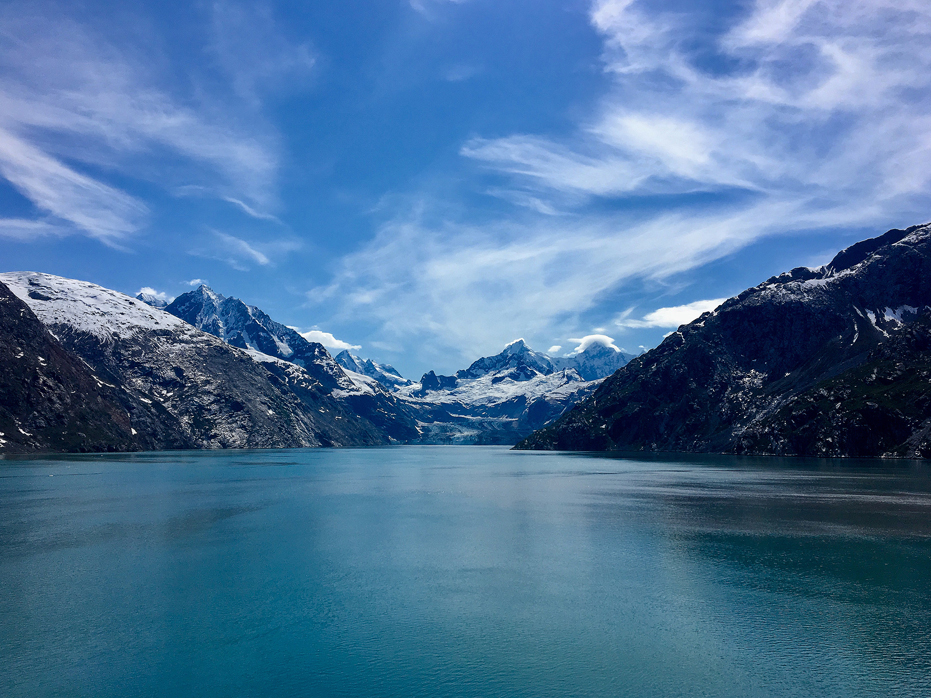
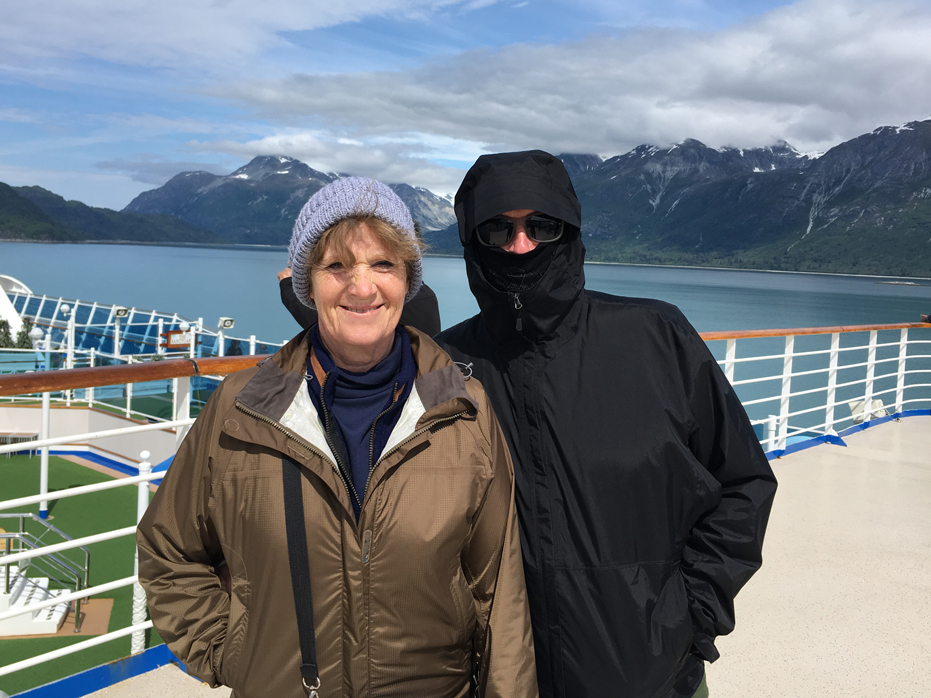
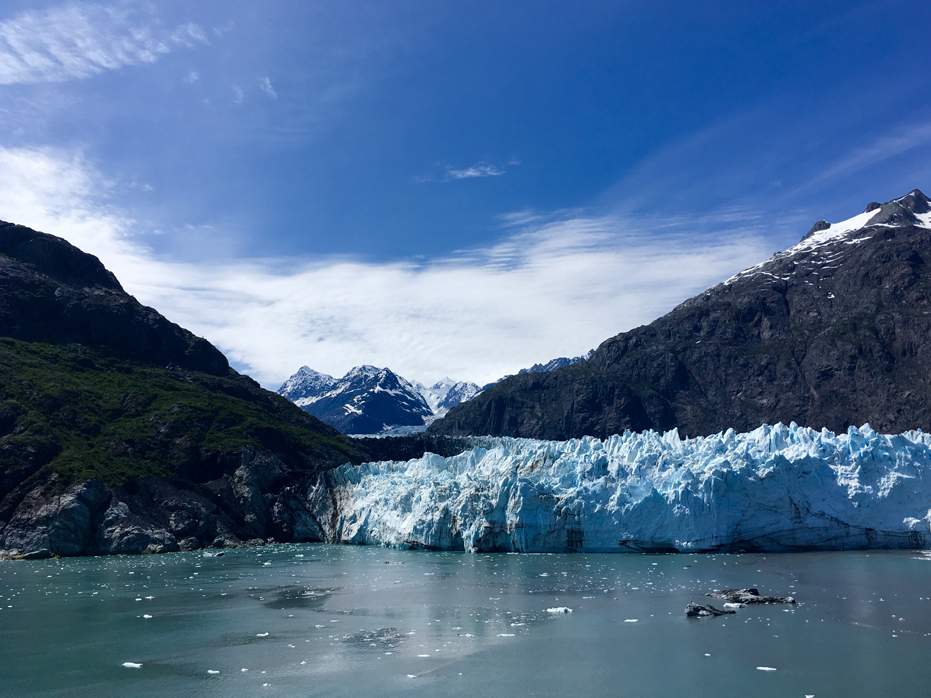
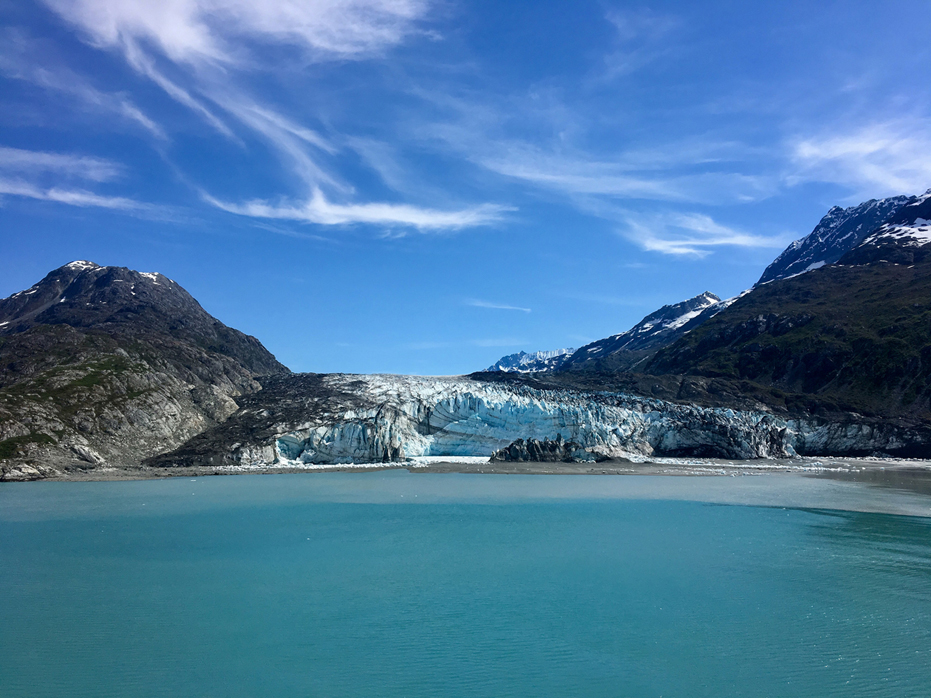

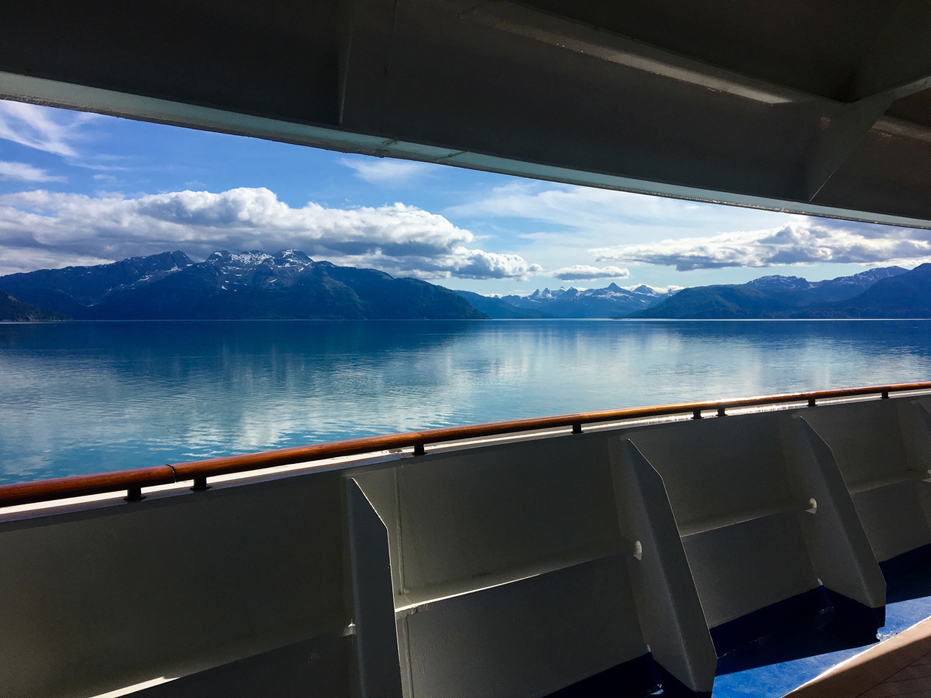
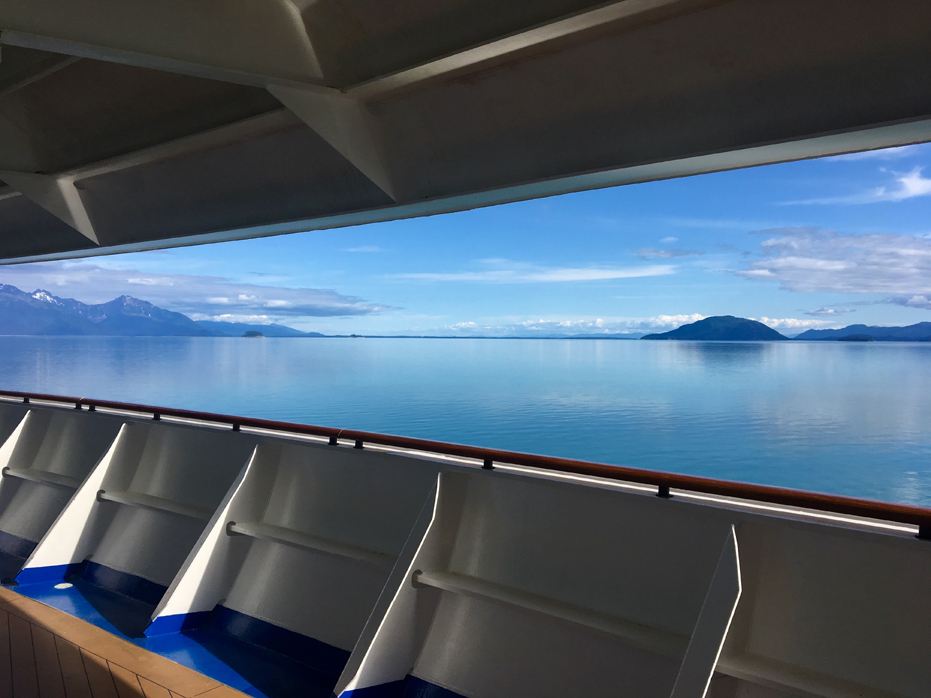
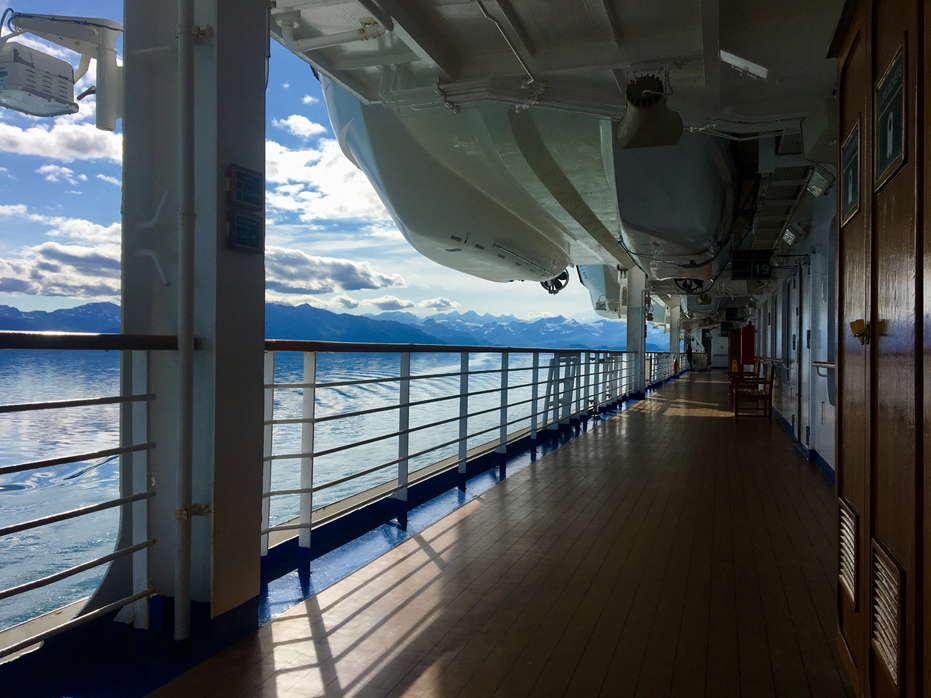
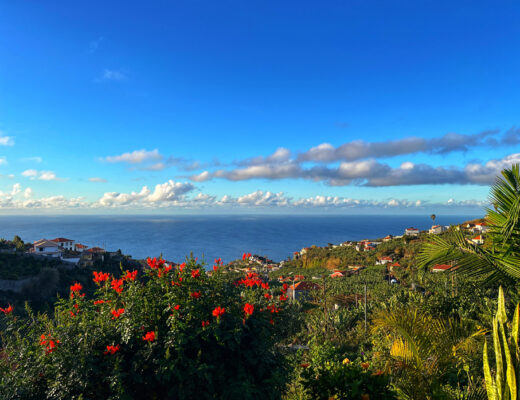
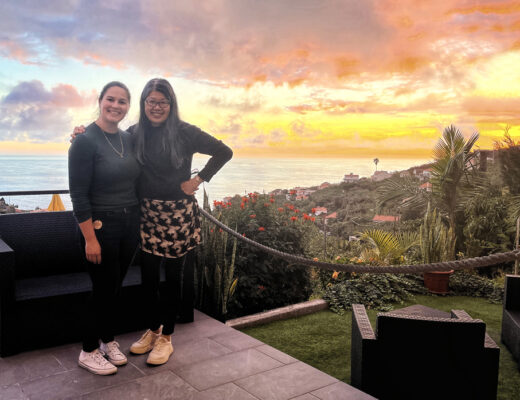
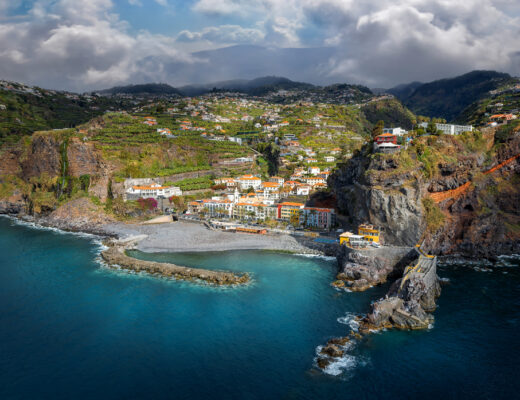
No Comments